In order to address the challenges of the 21st century, we cannot rely on 20th-century managerial paradigms and so must embrace new multi-scalar governance arrangements centering beneficial human relations with ecological systems and reduce our dependence on technological extractivism.
Governments and communities around the world are embracing Nature-based Solutions (NbS) as a major climate adaptation strategy. Building off of pre-existing approaches to integrating ecological and built systems, NbS attempt to meet a wide array of social goals including improving urban quality of life, supporting transit and recreation, and mitigating the impacts of extreme events.
In support of this work, NATURA is a global network of networks connecting researchers and practitioners to share knowledge on NbS and improve the implementation of NbS in different contexts. The early career working group within the project sought to identify emergent issues including the meaning of NbS, their motivations for working on NbS, and the challenges and opportunities facing the field. We find that diverse conceptualizations of NbS enable a more transformative approach that embeds considerations of social power and history within research and practice. In order to address the challenges of the 21st century, we cannot rely on 20th-century managerial paradigms and must embrace new multi-scalar governance arrangements centering beneficial human relations with nature and reduce our dependence on technological extractivism.
Introduction
As a group of early career researchers and practitioners within the global NATURA network of networks, we work on applying nature-based solutions (NbS) in varying social, ecological, technological, and geographical contexts. NbS have become mainstream as an urban climate adaptation approach, primarily in the global North (Figure 1). The NATURA project has defined NbS as “…solutions that are based on nature-preserving protective ecosystems, incorporating ecological elements, or even mimicking ecological processes in built infrastructure, offering flexibility in the face of changing conditions and providing multiple benefits to society, often at relatively low cost.” NbS then serves as an umbrella term encompassing different ecosystem-based approaches for climate adaptation inclusive of existing concepts such as green infrastructure, urban ecological infrastructure, and ecological engineering. In the broadest sense, NbS refers to the use of ecological elements to improve urban quality of life in the face of climate change and other social ills stemming from current infrastructure systems.
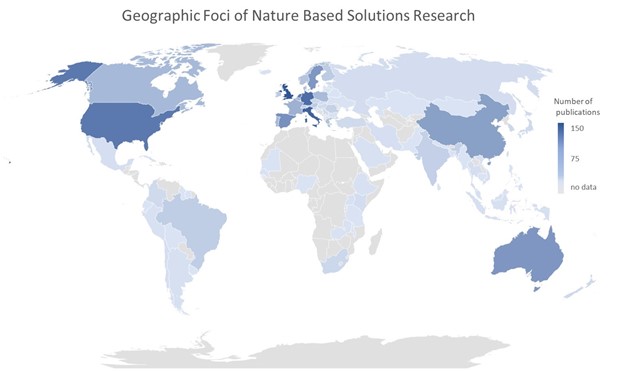
As NbS becomes the main approach for climate change adaption, we feel a need to examine its inherited approaches and ideas in light of the pressing human and environmental challenges of our time. These issues include social justice and equity in urban sustainability initiatives, the urgency of climate adaptation and mitigation, and the need for broader and more fundamental transformation of the infrastructural systems underpinning social well-being. Our early career working group was composed of individuals motivated to address these challenges within NbS research and policy.
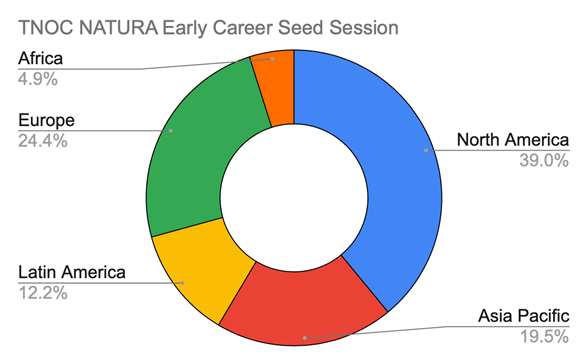
To that end, we seek to synthesize the diverse perspectives and approaches to NbS present within the NATURA Early Career working group and a TNOC workshop we organized in February of 2021. The aim was to critically reflect on (1) what NbS means to us and our work; (2) why we are motivated to work on implementing and researching them; and (3) the practical challenges and opportunities for advancing NbS. From our early career perspective, we identify an emergent agenda for NbS research, policy, and practice.
The Meaning of NbS
Both the NATURA early career working group and TNOC session had broad geographic and disciplinary representation through the 45 participants virtually joining from across the globe (Figure 2). The resulting ideas of what constituted NbS reflected this diversity and geography. There was broad consensus that the exact meaning of NbS is often contested, with major tensions between agendas of regulatory and institutional actors and self-organized and ‘bottom-up’ relationships with nature and ecological systems.
The group also found that NbS provides a way of thinking about the deeper relationships between human-built systems and natural systems. Similar to concepts of biomimicry, NbS in this sense turns our attention to how ancient and evolving ecological systems are impacted by and interdependent with human-built infrastructures. Understanding NbS in this way focuses on reciprocal relationships with nature, and as such requires a shift in value systems and world views to reflect an understanding of humans as part of nature rather than as separate entities. While mainstream NbS remains a ‘solutions’-oriented framework — related to the utilitarian construct of Ecosystem Services – our broader framing has potential to promote systemic change in the relationship of infrastructures with natural systems. Such changes include integrating ecological conservation and restoration within urban design and infrastructure planning, and identifying root causes of environmental problems and resilience challenges such as systemic racism and resource extractivism. Similarly, participants recognized the centrality of equity and justice concerns in any reformulation of the human relationship with nature.
While such a framing of NbS is quite broad, it makes space for a diversity of approaches and elements within NbS research and practice that go beyond those currently being used by major implementing organizations (Box 1). Participants raised several issues that related to the meaning of NbS. A major one was the depth of ecological understanding of NbS during their design. For example, if wetlands were being “designed” to handle waste or stormwater, were their dynamic ecological processes considered during design, and by whom? What was the exact role of wetlands in urban nutrient cycling, as well as how these relate to other social and ecological functions and characteristics (e.g. recreation, biocultural relationships, and biodiversity)? This example highlights the importance of the social processes for identifying and framing challenges addressed by NbS, all of which relate to ontological issues around what types of cultural and ecological elements are considered as “nature”, the diversity and abundances of species considered as part of NbS, and their relationships with ecological and technological systems.
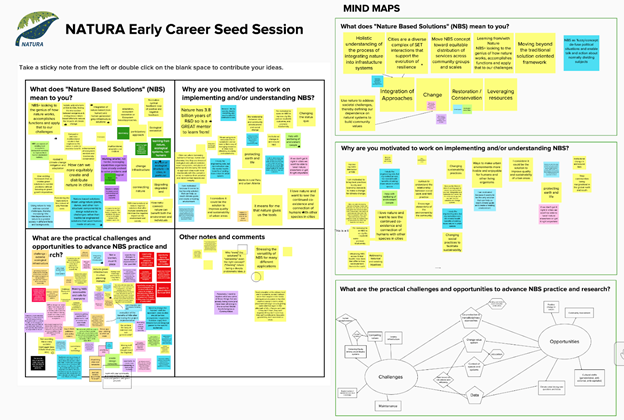
| Box 1: Definitions of Nature Based Solutions
According to the Web of Science Core Collection, the term “nature based solutions” explicitly in the title or abstract, first appeared in 2015 and in 864 peer-reviewed documents since then (as of 20 July 2021). Papers predominately fall under the categories of Environmental Sciences (n = 485), Environmental Studies (n = 237), and Green Sustainable Science Technology (n = 168). Authors and institutions are mostly from the Global North, predominantly Europe (Figure 1). Even with this recent appearance and limited research to date, the term has already diversified. In the United States ‘nature based infrastructure’ and ‘engineering with nature’ are common descriptions for actions to support resilience and to reduce flood risk (US Army Corps of Engineers, 2013, Nesshöver et al., 2017). In Europe, NbS are considered to also ‘harness the power and sophistication of nature to turn environmental, social and economic challenges into innovation opportunities’ (European Commission, 2015 p. 2). Other international organisations such as the International Union for Conservation of Nature (IUCN) and the World Resources Institute (WRI) consider it as those actions that protect, restore, and sustainably manage natural ecosystems while also providing benefits to both society and nature. Established, formal, definitions of NbS include:
|
Motivations for working on NbS
Early career individuals have diverse motivations for pursuing NbS work, as was highlighted in the diversity of responses to our prompts in the TNOC working session (Figure 3). While diverse, several dominant motivations emerged, namely the need to address increasing climate chaos, deal with urban sustainability challenges in a much more focused and transformative way, and deal with broader systemic and strategic transformations required for planetary sustainability.
Impending Climate Chaos
Not surprisingly, addressing climate challenges, including extreme heat, drought, sea level rise, hurricanes, and flooding, are a large motivation for early career researchers studying NbS. NbS were seen as “…the only solution that can help us reach climate goals and create a healing environment,’ – not only combining adaptation and mitigation within one solution pathway, but addressing the deeper-seated alienation of humans from natural systems in an effort to restore right relations.
Transformative Urban Sustainability
Another major motivation is to transform the urban sustainability agenda. In particular, rather than simply focusing on ‘climate proofing cities’, early career professionals are motivated to understand how NbS can achieve social justice, restore indigenous systems of governance and knowledge, promote community leadership of/anchoring NbS initiatives at appropriate scales, and focus more on health and wellbeing of communities and less on economic outcomes.
These transformative sustainability ideals are seen as particularly critical in cities. Several participants provided insights worth quoting in that
Cities are where increasing numbers of beings, humans and otherwise, live: they are the drivers of biological and cultural evolution, novel ecosystems, and places of exchange and discovery. We need to approach cities much more intentionally with this context in mind, to maximise their potential and minimise their hazards and inequity.
and
If we don’t get it right in cities, we won’t be able to “save” nature elsewhere or get it right anywhere.
And lastly
An unrecognised form of NbS is traditional and indigenous knowledge systems which in their own right offer various solutions. Such knowledge systems have much to offer across the world. They are well suited and highly locally contextual and have much scope. Some of such solutions are now finding their way to mainstream in different ways — ranging from objects of daily use such as bamboo straws, bamboo and Neem tooth brushes to living infrastructures such as the famous root bridges in North East India.
Systemic and Strategic Transformations for Planetary Sustainability
In addition to specifically targeting the urban sustainability agenda for transformation, participants in the EC working group desire even deeper transformations in how NbS practice is taking shape to positively influence planetary sustainability concerns. These desires are in line with broader calls for radical transformation of society and infrastructure systems through embracing the concept of NbS (McPhearson et al. 2021). This larger transformation seeks both a paradigm shift in terms of learning from and emulating natural systems in infrastructure and system design, achieving genuine multi-functionality, as well as accelerating institutional and knowledge system changes required to enable this type of transformation. From this point of view, society, ecology, and technology are fundamentally intertwined as a system, and this larger system is what needs to be radically transformed in order for NbS to be successful in addressing the multitude of related climate and justice goals. A key dimension of this systemic change requires new models of multi-scalar knowledge generation, utilization, and governance, as characterized by one quote from a workshop participant:
Local and regional networks are critical, especially with a research/educational institution as a key participant. Many participants from many types of practice can experiment with approaches, collaborate on intersectional solutions, and share the knowledge they gain.
At the macro level, there is a widely agreed-upon need to accelerate the rate of systemic change. Overall, we feel an increasing urgency to operationalize emergent frameworks for climate-resilient, multi-functional infrastructure addressing intersecting challenges related to climate change, urban sustainability, social equity, and justice, as well as center indigenous and place-based approaches for governance and adaptation. These fundamental transformations of human systems and their relationship with the earth system are absolutely critical to address the multi-scalar and interdependent challenges of planetary sustainability.
Challenges and Opportunities for NbS
Participants had much to say about the challenges and opportunities within NbS research and practice. We organized these into the emergent themes of addressing a need for genuine transdisciplinarity, centering equity and justice principles in the face of very technical decision-making processes, addressing competing value systems and uneven power relations, and lastly, dealing with the contextual and contingent nature of NbS projects.
Genuine Transdisciplinarity
A major challenge – opportunity pair identified is in combining the diverse disciplinary knowledge required to achieve success in NbS projects and research programs. There is widespread agreement that projects and programmes require a transdisciplinary approach in order to both understand the complexity of how NbS fit into existing social and technological systems and deliver on their multiple benefits. Without transdisciplinary research approaches drawing on both biophysical, social science, and participatory research paradigms, it will be impossible to have projects that are context-specific, co-produced and owned by the communities navigating competing demands of different groups. While there is a growing acknowledgement in the academic community that NbS requires a transdisciplinary approach, little consideration is often given to how different underlying conceptual (e.g. scope of approaches) and ontological (meaning of ‘nature’) frameworks shape NbS research and practice. For example, health is often framed in terms of active recreation and biophysical benefits (Dumitru et al. 2020), and furthermore, often seen as secondary to social and economic benefits. Other perspectives on health, such as community health, and relational health frameworks as suggested by recent research on environmental racism (Seamster and Purifoy 2021), look at broader psychological dimensions of belonging, affect, and a sense of responsibility and possibility with regards to how landscapes change. In this sense, an ontology of health as right relationships on multiple levels potentially conflicts with an ontology of health as biomechanical processes within a single organism, and each brings different concepts to bear on the problem (e.g. social transformation vs. medication). Another common theme was that engineering and (bio)physical science often dominate research and design of NbS, and if they ignore the impact of pre-existing structural inequalities, leads to reproduction of environmental and climate injustice.
Centering Equity and Justice in technical and financial decision making
If researchers and practitioners do not center equity and justice in NbS work it can be difficult, if not impossible, to include them as considerations down the road. In addition to basic issues of framing, a key challenge identified by early career researchers and practitioners is that when projects consider justice and equity of NbS, they do so through primarily a distributional perspective, omitting the potential changes that would come from considering participatory, recognitional, procedural, and transformative justice. Dealing with this multi-dimensional concept of justice in NbS projects and research is crucial to not contribute to perverse outcomes of projects. It will also help to identify where the conflicts are while simultaneously making the vital role of the less-privileged communities in environmental decision-making visible and active.
Participants also noted that the planning cycles for deployment or finance of NbS often have a short-term focus. In the UK, for example, the funding cycle for Defra (government), water supply and wastewater companies, and the Environment Agency are misaligned making it difficult for these stakeholders to collaborate with other programmes that deploy nature-based solutions e.g., NGOs’ public health, and community-based organisations. Taken together, the disciplinary, bureaucratic, and financial ‘realities’ of many NbS knowledge to action systems preclude a transformative approach towards including affected communities in research and practice.
Competing Value Systems and Uneven Power Relations
History has shown us that interventions like NbS often have capitalist intentions focusing solely on development and growth disguised as urban greening (Rosol et al. 2017). Early career researchers and those implementing these interventions on the ground have an important role to play challenging these practices to ensure the design of NbS to ensure that they are just and equitable.
In particular, there is a clear inertia in the field of NbS whereby existing conservation and infrastructure practices, and the culture from which they emerged, do not appear to have substantially shifted over the course of our earlier careers. These systems of decision-making have largely been top-down and non-collaborative, and there is a real need to create a cultural value shift around the need for real collaboration with affected communities. Ideally, as collaborative projects become the norm, and principles of Free Prior and Informed Consent become standard practice, the NbS community can lead on demonstrating the value of embedding procedural equity and justice within research and practice.
Proof of Concept and Contextual Contingency
Championing the advancement of the “science” of NbS by advocating the design and implementation of robust monitoring and evaluation programmes that incorporate indigenous and cultural knowledge is also an important goal for early career researchers and practitioners. This is central to work to advance the evidence of the impact NbS have on societal challenges across different scales. The challenge of demonstrating the value of NbS can be partially addressed by embracing opportunities for both “basic” research, in terms of modeling key biophysical processes, such as the role of coastal NbS in basin-scale wave-attenuation and mitigating sea level rise, which can provide new analytical tools with broad applicability. Another key challenge identified was that the functions and benefits of NbS are often perceived to be contingent upon following a particular maintenance regime, and are sensitive to environmental and built environment contexts.
For example, while bioretention facilities were embraced for their role in trapping sediment and pollutants, they become clogged up over time with hazardous waste that then must be disposed of at great costs. What if the larger urban technological system did not generate toxic waste in the first place? How do we beneficially incorporate landscape-scale processes such as sediment movement into the design and maintenance of NbS? Clearly, we have much to learn about how to balance a need for a particular aesthetic, functional predictability, and mimicking ecological processes across scales. How we deal with seasonal vegetation and weather dynamics is also a challenge for standardized engineering paradigms demanding consistency. In an increasingly chaotic climate these challenges are all magnified, highlighting opportunities for creating transparency in design standards to facilitate collaborative learning, and embracing ideas of modularity, flexibility, and facilitating the self-organization of complex ecological systems that have evolved in place over millennia (such as coastal marsh complexes that appear to adapt to sea level rise if not constrained by built infrastructures).
Case Studies Illustrating Diverse Definitions, Motivations, and Challenges and Opportunities for NbS Research and Practice
Across our network, several participants contributed case studies highlighting the major tensions and issues identified in our collaborative meetings and TNOC working session.
Case Study 1: NbS examples from South Africa
NbS projects have emerged in South Africa in a number of different forms, depending upon particular environmental challenges, as well the opportunity-space generated by particular social conditions or current events.
At the national level, the longstanding programs of Working for Water (since 1995) and Working for Wetlands (since 2002), and Working for the Coast (since 2008) provide environmental as well as social benefits through: the removal of alien invasive plant (AIP) species, restoration of native biodiversity and habitat, and provision of employment and skills training opportunities for people. While permanent eradication of AIPs requires long-term, ongoing intervention at sites, benefits include reduction in risk of out-competition of indigenous biodiversity, restoration of water to the water table (as IAPs use up large amounts of groundwater as compared with indigenous plants), and reduction in fire risk (to fire-prone AIP vegetation). Since the inception of the program, Working for Water has cleared more than one million hectares of AIPs. While the program is not designed to offer long-term employment, it has provided temporary jobs and training to approximately 20,000 people each year (with targeted attention to hire people from economically vulnerable groups, including women, youth, and disabled individuals).
At a city level, there are multiple instances in which NbS have been instituted to restore or enhance ecological infrastructure, as well as supply cultural amenities and enhance social value for people. In Cape Town, there are examples of community-driven river or wetland area revitalizations, such as the Liesbeek River Life Project and Plan and Princess Vlei Restoration Project. There are also examples of municipally-driven projects, such as the Green Point Park Biodiversity Showcase Garden, which was one of the City’s Green Goal 2010 projects and part of improvements to the park following the 2010 FIFA World Cup. These various initiatives have focused on removing litter and waste as well as AIPs, restoring native biodiversity through plantings, improving water quality, and providing greater community cohesion and access to waterside amenities (e.g., for picnicking and barbecuing, recreational activities such as walking, boating, fishing, and other sports, and educational exhibits and instructional programs). Ongoing challenges facing these NbS include: equity and social justice questions surrounding who can secure access to these spaces and enjoy their benefits (e.g., are the spaces available to everyone, or rather, are they limited to those who live in the area or have the financial means to travel to the spaces?), threats to longevity of the spaces from bids for commercial development (such as shopping malls), and needs for coordination and perpetuity in maintenance and government-recognized protected area status.
Recently, the COVID-19 pandemic has precipitated a proliferation of a different kind of NbS in Cape Town: small-scale backyard food gardens and urban community farms. Amidst loss of livelihoods/income and increasing levels of food insecurity associated with the COVID-19 pandemic lockdown in South Africa, community food garden initiatives have emerged (such as the Gugulethu Urban Farming Initiative and the Langa Agri/Food Hub, with connection to neighborhood Community Action Networks (CANs)). These initiatives aim to green neighborhoods, grow and provide access to local, nutritious food, foster food sovereignty and security, and build community through the creation of urban “food forests.” Challenges to these initiatives include sustainability of financial and material resources (as many have been started and maintained through donations, short-term fundraising, and small grants, and many of the people running these programs are low-income or unemployed and volunteer their time to keep them going). Other challenges involve gaining formal recognition and status for initiatives (such as NPO status), establishing and maintaining access to distribution networks and markets (for donating or selling produce), and legal access to parcels of land on which to grow crops.
Case Study 2: Flood Control in San Juan, Puerto Rico
Hurricanes María and Irma, which struck San Juan in the fall of 2017, revealed San Juan’s vulnerability to floods and served as a call-to-action to build resilience to future storms in Puerto Rico. The US Army Corps of Engineers (USACE) had a shelved flood control project from 1986 to channelize 9.5 miles of the Puerto Nuevo River – the largest river in the San Juan Metropolitan area. Over a billion dollars was allocated by the federal government in the wake of these hurricanes to begin construction. The USACE’s decade-old project mission was simple: move water as quickly as possible through the river channel and out to the San Juan Bay. Little consideration was given to NbS when the project was designed in the 80s. A high-velocity concrete channel was chosen as the best means to achieve that goal. Despite the apparent conflict with the USACE’s new internal Engineering with Nature vision (see Box 1), the USACE believed that they must move forward with the decade-old channelization project as originally envisioned or risk having to cancel the project and lose the funding. Due to this perceived risk, little to no effort was made to engage with local community leaders and scientists to reimagine what flood control could look like through this alternative NbS mission framing. Instead, local community leaders have taken up the banner in developing NbS visions and designs for flood control that can serve as alternatives to the USACE project. Their message has been: “The river is alive, and nobody knows”. The nascent efforts by local community groups to present alternative framings of flood control are promising, yet have met resistance given the USACE’s narrow mission and vision.
Being a territory of the United States without any representation at the federal level, this example from Puerto Rico highlights how powerful institutions can wield political and institutional power over local communities in shaping their community’s future. While the USACE may have conducted the cost-benefit analysis of the project and its outcomes on communities (the distributional equity aspect), they have seemingly not taken into consideration issues of participatory, procedural, and transformative justice mentioned earlier in Section 4.
This case also highlights how institutional routines, practices, and approaches in an organization are obdurate to change and present a challenge for institutions trying to implement NbS. Despite the USACE’s new framing of flood control projects, the institutional legacies prevented the USACE from reimagining flood control through an NbS lens in San Juan. This case demonstrates the importance of community participation and building multi-level governance capacities in helping to overcome these individual institutional and political challenges.
The early-career researchers who have assisted with this project have been motivated to not only build the flood resilience of San Juan communities, but to also restore watersheds and build the transformative capacities needed to promote community leadership of NbS initiatives.
Case Study 3 Greening Wingrove, UK
NbS within the United Kingdom have taken many, often contested forms (Wright 2011), and have most recently been incorporated into a larger social agenda around sustainability transitions and urban greening. In one case, a group of residents in the West End of Newcastle, UK came together with local ward councillors to explore how they could tackle problems of litter and fly-tipping (i.e. illegal dumping) through a sustainability transition framework including numerous elements of urban greening. Working together with Ward Councillor’s, ‘Green Wingrove’ was born and, in 2014, they secured a £1M grant to help educate the community about sustainable living and re-green parts of the West End through the creation of a community garden, orchard, renovating neglected street planters, back yards food gardens, and an energy efficiency programme.
This project has not been without its challenges. Funding drew to a close in 2017 leading to the loss of community enablers that galvanising action on the ground, cessation of community-led initiatives, and overall downscaling of the programme. Like many other community-driven programmes, closure of sustainable community funding and drive for austerity within local government has posed significant challenges for Greening Wingrove. However, these challenges created many opportunities for reshaping and evolving approaches in a self-determined manner. In an effort to sustain Green Wingrove, work continued behind the scenes to help it transition to a Community Interest Company (CIC), which depended on a small group of volunteers to find creative ways to recycle resources, share plants and seeds to help local residents continue to grow their own food. Today, Greening Wingrove & Arthurs Hill CIC has three nature-based enterprises that operate from the community or the ‘Bike’: Northern Slice Café, Bonsai-Gorilla Garden shop, and the bike repair shop. However, keeping itself afloat and enabling more community action through programmes such as the ‘Growing Green Communities’ project is an ongoing challenge due to the transient nature of the community and its diverse ethnic nature with over 80 different dialects. Championing projects like this that deliver real change, but often don’t “cost the earth” to those that are most vulnerable to the impacts of climate change is a vital role for early career researchers, practitioners, and policymakers alike.
Case Study 4 Sejong Special Self-Governing City, South Korea
NbS in South Korea has been largely considered as a part of the low impact development (LID) or “eco-friendly” rainwater management solutions including bioswales, tree box filters, vegetated walls, rain gardens, infiltration basins, and pervious paving. More recently, with the government’s policy on promoting new housing and urban development to disperse the concentrated population in the metropolitan Seoul area, few cities have been selected as pilot cities for testing out a new paradigm for integrated stormwater management using NbS, namely the “Smart and Eco-friendly Rainwater Management Systems” (Shafique and Kim 2018).
In these cities, traditional approaches for managing stormwater and reclaiming rainwater reclamation have gained increasing urgency as the country faces mounting urban flooding and groundwater depletion problems due to dense urban developments. One of them, Sejong City, has adopted LID-focused NbS within its new urban development plan to reclaim rainwater and reduce runoff volume by ~20% and reduce average surface temperatures by ~1.4 degrees C. The ultimate motivation for the project came from a need to relocating central government offices in support of balancing national development and decentralizing development within the metropolitan Seoul area. The new designated administrative Sejong city will accommodate the relocation of 40 national governmental offices and 15 research institutes by 2030.
Several challenges became apparent during the implementation of NbS within this large-scale new urban development project. These included the lack of legal frameworks and regulations guiding design criteria, and closely related issues stemming from a lack of educational resources about NbS for practitioners and citizens, and a lack of country-specific expertise. As is occurring with Sejong city, NbS will be increasingly turned to in the country to reduce multi-faceted climate risks, including addressing water stress and scarcity alongside mitigating urban heat islands and reducing future urban flood hazards.
Case Study 5: Decentralized Wastewater Treatment Systems
One participant was involved in the regulation, evaluation, and monitoring of existing decentralized wastewater system initiatives through the CSE water team in India in 2019. This case highlighted that NbS can include ‘hybrid technologies’ or ecological-technological systems, a concept which “… explores the relationship between society and nature in the industrial ecosystem and the contradictions that define it. (Schneider 2011)” DWAT systems highlight the role of constructed microbial ecologies in solving persistent human challenges. One example of such a system is the ‘Showcase’ Wastewater system at CSE campus, implemented in 2005, has been designed to treat 8000 litres per day, or the effluent generated by ~100 people. The system is composed of a settling bed, an anaerobic baffled biogas reactor, and a planted filter bed, which treats grey and black water for onsite horticultural re-use and could otherwise be used for agricultural irrigation. The facility serves as a model system for CSE’s consulting work across India.
The motivation for these systems varies across the country. In the industrialised Tughlakabad Institutional area where CSE is located, ongoing water scarcity has highlighted the need for sustainable and cost-effective water treatment solutions. Centralised sewage treatment technologies have proven to be expensive, complex, and are wasteful with regards to the total wastewater generated which also has unacceptable negative impacts on local ecosystems and environmental health.
The construction and dissemination of these systems have not been without challenges. This case highlights the continuous maintenance and training required for stakeholders to employ safely; involving water quality monitoring, plant health surveillance, and routine record keeping. In addition, concerns over the scale of applicability and insufficient land in urban centres arise. While questions over who responsibility falls to multi-partner organisations and developments are evident, as well as competing interests from large-scale infrastructure companies pushing large centralized projects. There are several obstacles to overcome, not least cultural barriers to water reuse and informed knowledge of these systems for widespread uptake.
However, opportunities exist to replicate similar models and refine them within specific application contexts in India and beyond – Over 1/3 % of the world’s population experiences periodic water stress, and issues of scarcity from overconsumption and quality degradation will only be exacerbated by climate change and growing human populations. While not a panacea, DWAT systems create a more cost-effective and ecologically integrated solution towards the perennial problem of wastewater treatment than large expensive technologically fragile centralized systems. While these systems are increasingly deployed in the global south, numerous instances of alternative ecological solutions utilizing a decentralized/distributed wastewater treatment paradigm are also becoming increasingly common in the global north (Angelakis and Snyder 2015).
An agenda for future research and practice on NbS: working on cultural and systemic change for a sustainable future
Early career researchers within the NATURA network seek to engage in transformative work to address multi-scalar and intersectional sustainability, equity, and justice challenges in NbS. This work requires broader cultural and systemic transformation in order to be successful. As we work towards these larger goals, a research agenda emerges that seeks both practical knowledge and wisdom as to what works where, how, and why? These questions must be addressed alongside deeper questions about the role of scientists and experts in relation to the communities impacted by NbS work.
Major topics for further examination include questions such as:
- What concepts and definitions of NbS propel different types of projects?
- What are their epistemological and ontological foundations, what do they include?
- What do they omit?
- How are they influenced by disciplinary, cultural, institutional, and political factors?
- Do these different concepts and their related approaches overlap or diverge, how do these relate to uneven power relations of different actors and institutions?
- How does NbS research and practice consider the history and context of the need for and the nature of NbS?
- How do they grapple with questions related to the systems of governing nature and their equity and justice?
- At what scale do we need to consider urban NbS?
- Only within the city? Including watersheds?
- Regional ecological networks?
- The full extent of urban metabolism and ecological footprint?
- At what spatial, temporal, and social resolution do we deal with global networked social, ecological, and infrastructural complexity?
It is readily apparent that the emergent field of NbS has many questions to answer. It also has a long, and often troubled tradition of imposing particular society-nature ideals onto human and ecological communities. The primary task ahead of us remains the balancing of our motivations to address urgent crises facing humanity with a sensitive and nuanced approach that centers on building healthy relationships with the human and ecological communities that will be impacted by our work. Ultimately, many of us seek to collaboratively produce convivial social-ecological-technological systems, not only to ensure their sustainability, but to provide humans and non-humans alike for a deep and lasting satisfaction with our time here on earth.
Zbigniew Grabowski1, Ffion Atkins2, Lelani Mannetti3, Clair Cooper4, Danielle McCarthy5, Robert Hobbins3, Matt Smith6, Yuliya Dzyuban7, Charlyn Green3, Yeowon Kim8, Richa Joshi, Hopeland P9, Pablo Herreros Cantis1, Luis Ortiz4
1 — New York; 2 — Cape Town; 3 — Atlanta; 4 — Durham; 5 — Belfast; 6 — University Park; 7 — Singapore; 8 — Ottawa; 9 — Tamil Nadu
about the writer
Ffion Atkins
Ffion is a postdoctoral research fellow at the University of Cape Town focusing on bridging urban metabolism with landscape ecology. With a background in Oceanography, her current work centres around the fluxes of water and nitrogen (and sometimes plastic) in coastal urban systems.
about the writer
Lelani Mannetti
A current Postdoctoral Research Associate at the Urban Studies Institute, Mannetti promotes visionary thinking by city stakeholders to enable sustainable solutions to resilience challenges. With a PhD in Conservation Ecology from Stellenbosch University, South Africa, her research focuses on the adaptive co-governance of complex social-ecological systems.
about the writer
Clair Cooper
Clair Cooper is a PhD candidate at Durham University in the UK and an early career fellow at the Urban Systems Lab, New School sponsored by NATURA. Using geometric data analysis techniques, thematic mapping and quantitative text analysis, Clair’s thesis explores the nexus between Nature-based Solutions and structural conditions that influence poor health in cities.
about the writer
Danielle McCarthy
Danielle is a PhD candidate and interdisciplinary researcher in the School of Natural and Built Environment, Queen’s University, Belfast. Her interests lie in the nexus of health, built environment, ecology and environmental psychology. Her PhD topic explores the role of urban nature on physical activity in older adults in Belfast.
about the writer
Robert Hobbins
Robert Hobbins is a Postdoctoral Research Associate at the Urban Studies Institute at Georgia State University. He is an urban sustainability scientist and knowledge architect who researches and implements strategies to build more inclusive, equitable, and resilient cities given today’s rapidly changing environmental conditions.
about the writer
Matt Smit
Matt Smith is a NOAA Sea Grant Knauss Policy Fellow working with the U.S. Army Corps of Engineers Institute for Water Resources and the Coastal States Organization. He is also a Ph.D. Candidate and soon-to-be graduate in Biological Sciences at Florida International University where he studies the influence of coastal flooding and stormwater infrastructure on urban water quality.
about the writer
Yuliya Dzyuban
Dr. Yuliya Dzyuban is a Research Fellow at Singapore Management University for the Cooling Singapore 2.0 project exploring the impact of vegetation on urban climate and perception of heat. Her area of expertise lies in using mixed-methods approaches to uncover relationships between urban morphology, microclimate, and human wellbeing.
about the writer
Charlyn Green
Charlyn Green is a research coordinator at the Urban Studies Institute working on resilience and well-being on the micro, mezzo, and macro scales; trans-disciplinary thinking in problem-solving approaches; social welfare policy; community-based participatory research (CBPR).
about the writer
Yeowon Kim
Yeowon Kim is professor at Carleton University where she undertakes interdisciplinary studies of infrastructure systems, urban ecohydrology, stormwater management, and institutional governance for sustainable urban futures influenced by resilience theory, civil and environmental engineering, and systems science.
about the writer
Hopeland P
Hopeland is an interdisciplinary ecologist and practitioner working primarily at the intersection of biodiversity, urban ecology, design, restoration ecology and conservation.
about the writer
Pablo Cantis
Pablo Herreros is a Research Fellow at the URban Systems Lab at the New School, where he applies socio-ecological analysis to urban ecosystem services and environmental risks, with special focus on their spatial attributes and their links to social justice. He previously studied environmental engineering at the Polytechnic University of Madrid, Spain.
about the writer
Luis Ortiz
Luis Ortiz is currently an EPA ORISE Fellow. As Postdoctoral Research Fellow with the Urban Systems Lab at The New School he examined the spatial and social dimensions of climate change and energy justice.
References:
Dumitru, Adina, Frantzeskaki, Niki, Collier, Marcus. (2020). Identifying principles for the design of robust impact evaluation frameworks for nature-based solutions in cities. Environmental Science & Policy. 112, 107-116.
European Commission. (2015). Towards an EU Research and Innovation policy agenda for nature-based solutions & re-naturing cities. Final Report of the Horizon2020 Expert Group on Nature-Based Solutions and Re-Naturing Cities. Brussels: European Commission.
McPhearson, T., Raymond, C. M., Gulsrud, N., Albert, C., Coles, N., Fagerholm, N., … & Vierikko, K. (2021). Radical changes are needed for transformations to a good Anthropocene. npj Urban Sustainability, 1(1), 1-13.
Nesshöver, C., Assmuth, T., Irvine, K. N., Rusch, G. M., Waylen, K. A., Delbaere, B., Haase, D., Jones-Walters, L., Keune, H., Kovacs, E., Krauze, K., Külvik, M., Rey, F., van Dijk, J., Vistad, O. I., Wilkinson, M. E., & Wittmer, H. (2017). The science, policy and practice of nature-based solutions: An interdisciplinary perspective. Science of the Total Environment, 579, 1215-1227. https://doi.org/10.1016/j.scitotenv.2016.11.106
Rosol, M, Beal, V, & Mossner, S, (2017). Greenest cities? The (post-)politics of new urban environmental regimes. Environment and Planning A. 49, 8, pp.1710-1718.
Schneider, D. (2011). Hybrid nature: Sewage treatment and the contradictions of the industrial ecosystem. MIT Press.
Seamster, L., & Purifoy, D. (2021). What is environmental racism for? Place-based harm and relational development. Environmental Sociology, 7(2), 110-121.
Shafique, M., & Kim, R. (2018). Recent progress in Low-Impact Development in South Korea: Water-management policies, challenges and opportunities. Water, 10(4), 435.
US Army Corps of Engineers (2013). US Army Corps of Engineers Coastal Risk Reduction and Resilience. CWTS 2013-3 Directorate of Civil Works, US Army Corps of Engineers, Washington.
Wright, H. (2011). Understanding green infrastructure: the development of a contested concept in England. Local Environment, 16(10), 1003-1019.


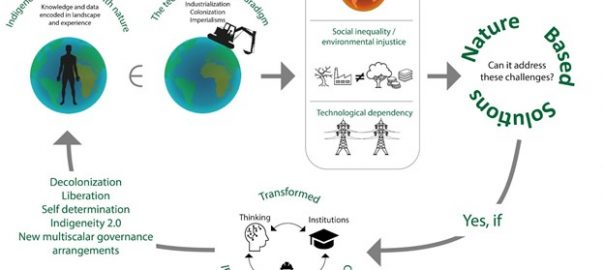
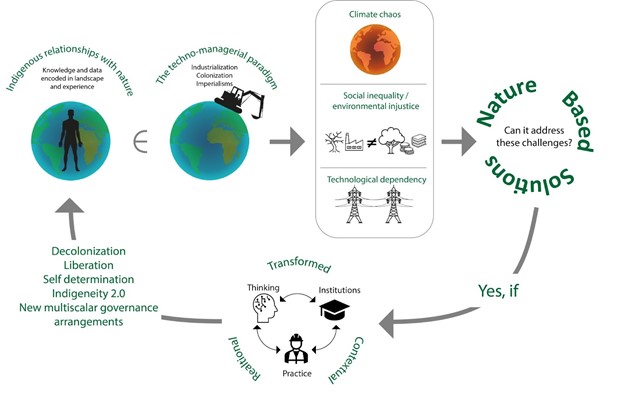
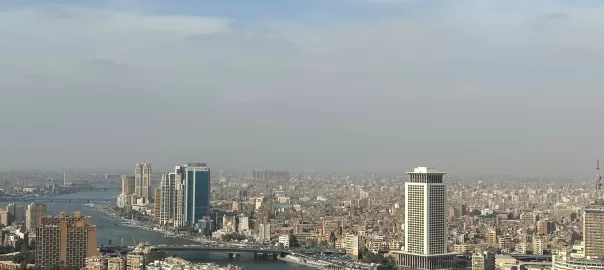
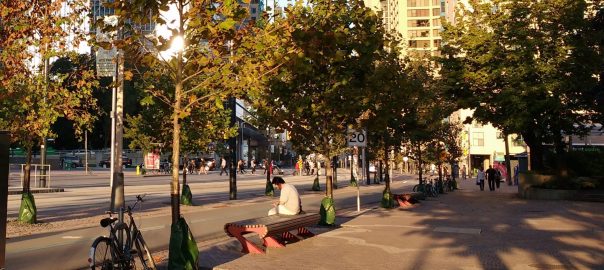
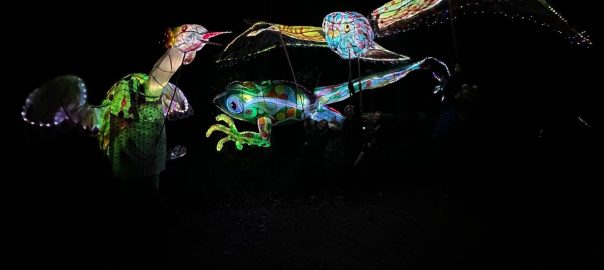
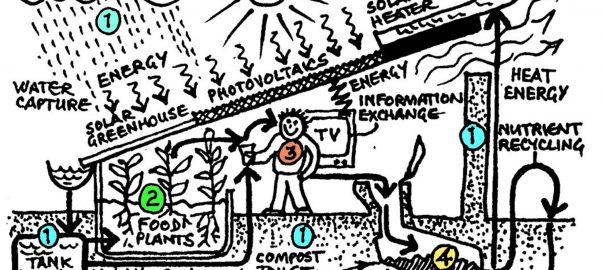
Leave a Reply